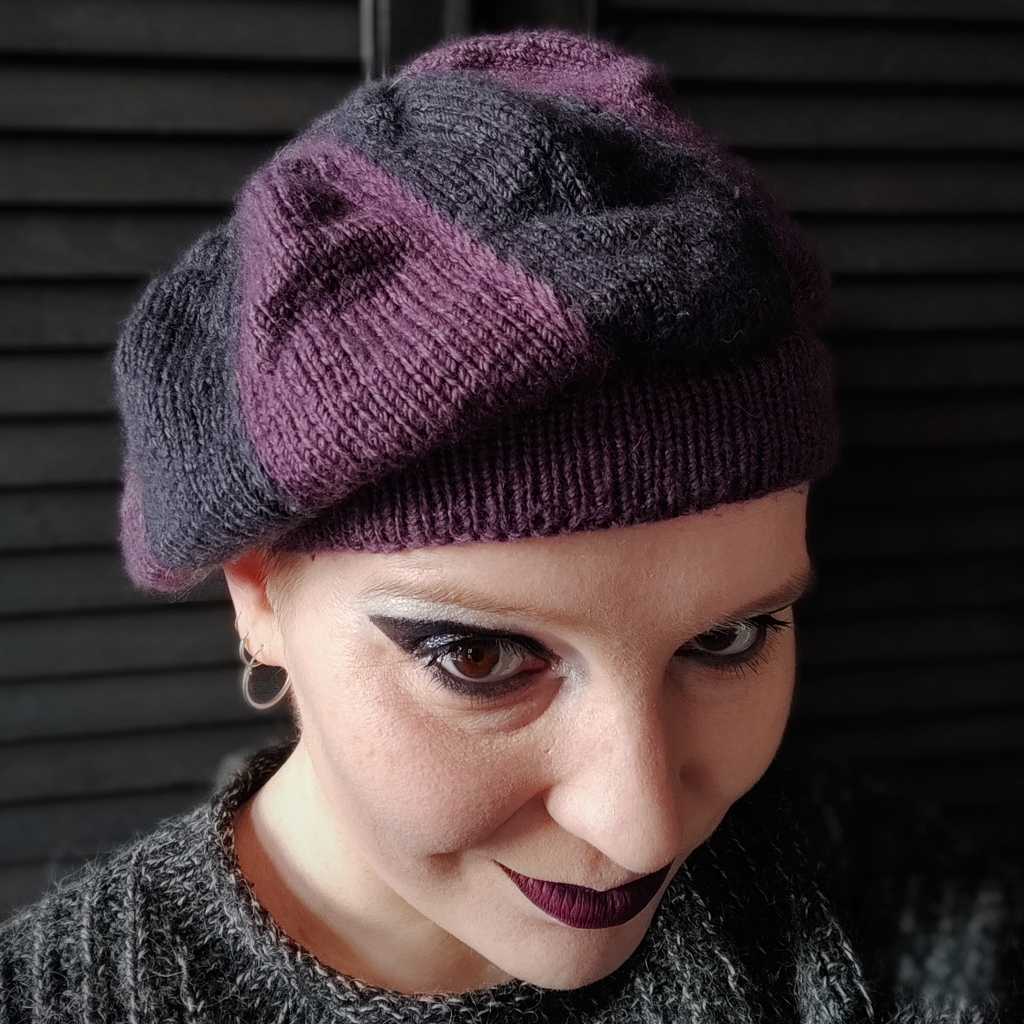[advertisement: PR sample, unpaid links]
When I was given some Rowan Island Blend samples at last year’s Rowan Roadshow, I instantly knew I would turn them into a very special hat. I had experimented on an unusual shape before and was sure that this soft and drapey yarn was the perfect choice for my idea.
I wanted a hat that can be worn either as a beanie or as a tam. There also was this idea of three-dimensional segments that add dramatic volume. Voilà, Opulence was born. The hat looks extra spectacular when worked in different colours, but due to its unusual shape, it also looks stunning in one single colourway without the colourwork. Opulence is worked bottom-up in one piece using intarsia in-the-round if you opt for the multi-coloured version. A folded hem contrasts the opulent crown.

My sample uses Rowan Island Blend (70% Falkland merino wool, 15% baby alpaca, 15% silk; 137 yd / 125 m per 50 g) in Empire as main colour and Jet as contrasting colour. The DK weight yarn is very soft and drapey, light enough to wear the hat in spring, yet warm enough to also wear it in winter. However, if you prefer another DK weight yarn, just make sure you meet gauge and surprise me with your interpretation! The pattern comes in six sizes to fit to fit 14 (16, 18, 20, 22, 24)″ / 35.5 (40.5, 45.5, 50.5, 56, 61) cm head circumference. As usually, you can buy the pattern in my Ravelry store. I am looking forward to all your colourful Opulence hats!



